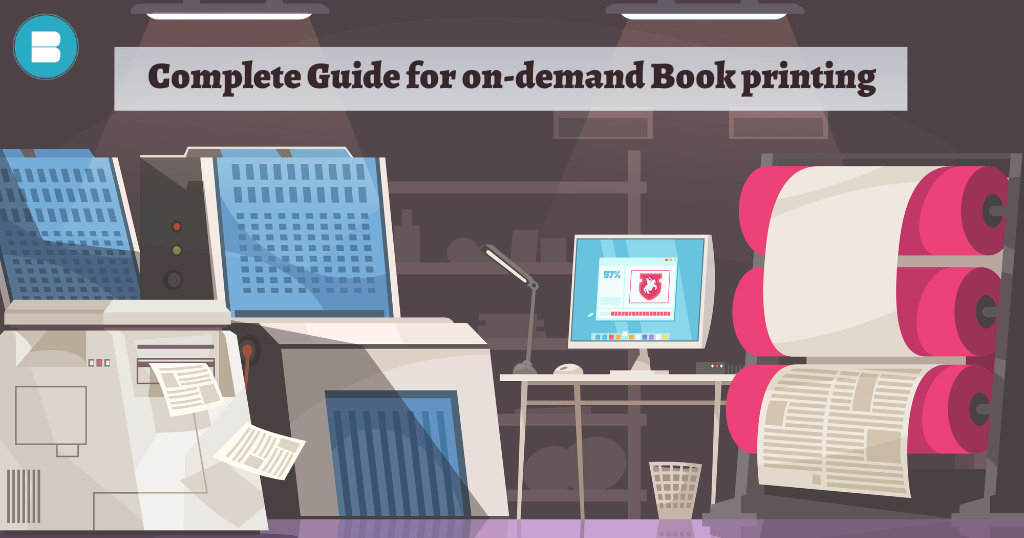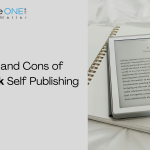The complete guide to understand what is print on demand book printing.
The books that we hold in our hands with pale brown shade and the musky scent of the new books and old books that have aged like fine wine. From writing to seeing it in both online and offline spaces makes you feel proud because you have been a part of each step yourself but one step that you didn’t see was PRINTING.
Read: Best bedtime stories for your kids before going to bed.
The experience of reading is enhanced by holding a book between our hands while lost in the country of our imagination. However, multiple stages must occur before a finished copy of a book reaches our hands. So want to know what happens behind those closed flaps?
How did printing started?
Printing dates back to 3500 BCE, when the proto-Elamite and Sumerian civilizations utilised cylinder seals to validate clay-written texts. Block seals, hammered coins, pottery imprints, and fabric printing were among early forms.
Johannes Gutenberg invented the first moveable type printing technology in Europe around 1450. He pioneered improvements in casting type based on a matrix and hand mould, screw-press adaptations, the use of an oil-based ink, and the development of a softer and more absorbent paper. Gutenberg was the first to make type using an alloy of lead, tin, antimony, copper, and bismuth, which is still used today.
Around 1436, Johannes Gutenberg began work on his printing press with Andreas Dritzehen, whom he had previously instructed in gem-cutting, and Andreas Heilmann, the proprietor of a paper mill.
What is Print on Demand?
Print on Demand (POD) is a method of printing books that was first utilised for extensive backlists. You could keep selling them even if the amount of sales per year did not justify a new print run and keeping the books in inventory. POD allows you to print a single copy or a few hundred copies as needed. Printing and binding are automated and quick, and the cost per copy can be as low as three times (or even twice) that of an offset run.
After a few years, authors who truly self-published (founding their own publishing company and publishing their own books) began to use this method to service online sales and/or sell more expensive titles through specialty stores where the extra cost of printing was not as high a proportion of total revenue. Soon after the self-publishing emerged to be established companies and they would make the books available to conventional bookstores on a special order basis if buyers requested them (with a higher than usual cost). This enabled the corporations to inform authors that their works were “available through retailers around the country.”

The precise definition and consequences of that definition will be determined by the context in which the term is employed.
The printing procedure is roughly as follows: the properly prepared pdf is supplied to the printer. It’s similar to a high-speed laser printer. The sheets that result are gathered. The cover has been printed. The spine edge is then bonded into the cover, and everything is trimmed to size. Typically, a bar code printed on the last page of the book block is used to match the book block (pages) with the cover. Some plants take a different approach.
Print on demand with digital technology is a method of printing and distribution of products at a fixed cost per copy, independent of order quantity. While the unit price of each physical copy is more than with offset printing, the average cost is cheaper for extremely small print projects since offset printing has far higher setup costs.
Create & Publish Your Book For Free
Apart from lower prices (for small works), POD has the following business advantages:
- Technical setup is typically faster than with offset printing.
- Large stockpiles of a book or print material are not required, lowering storage, handling, and inventory accounting costs.
- Unsold products generate little or no waste.
- Many publishers utilise POD for purposes other than book printing, such as galley proofs, catalogues, and review copies.
These benefits lower the risks connected with printing books and prints and may result in more options for customers. However, because the publisher’s risks are decreased, quality control may be less stringent than usual.
On-demand book printing is used by the BlueRose Publishing platform as a cost- and time-effective strategy. Additionally, our platform provides free self publishing for everyone and the opportunity to have your book appear on well-known e-commerce sites like Amazon, Flipkart, and BlueRose store.
You are given total creative control over the book publishing process with BlueRose. Reach your goal of becoming a best-selling author and receive 100% of the profits from book sales.
















